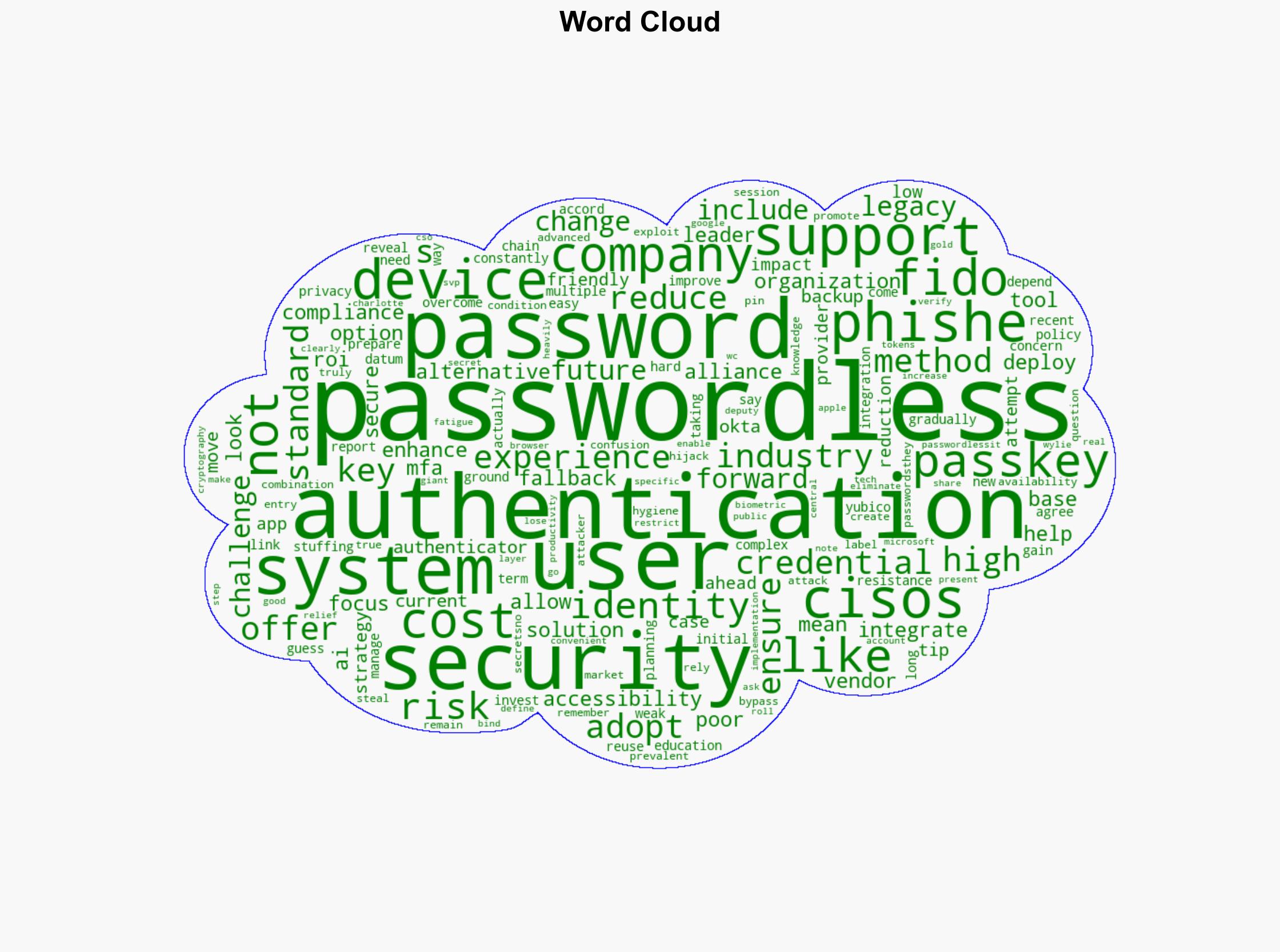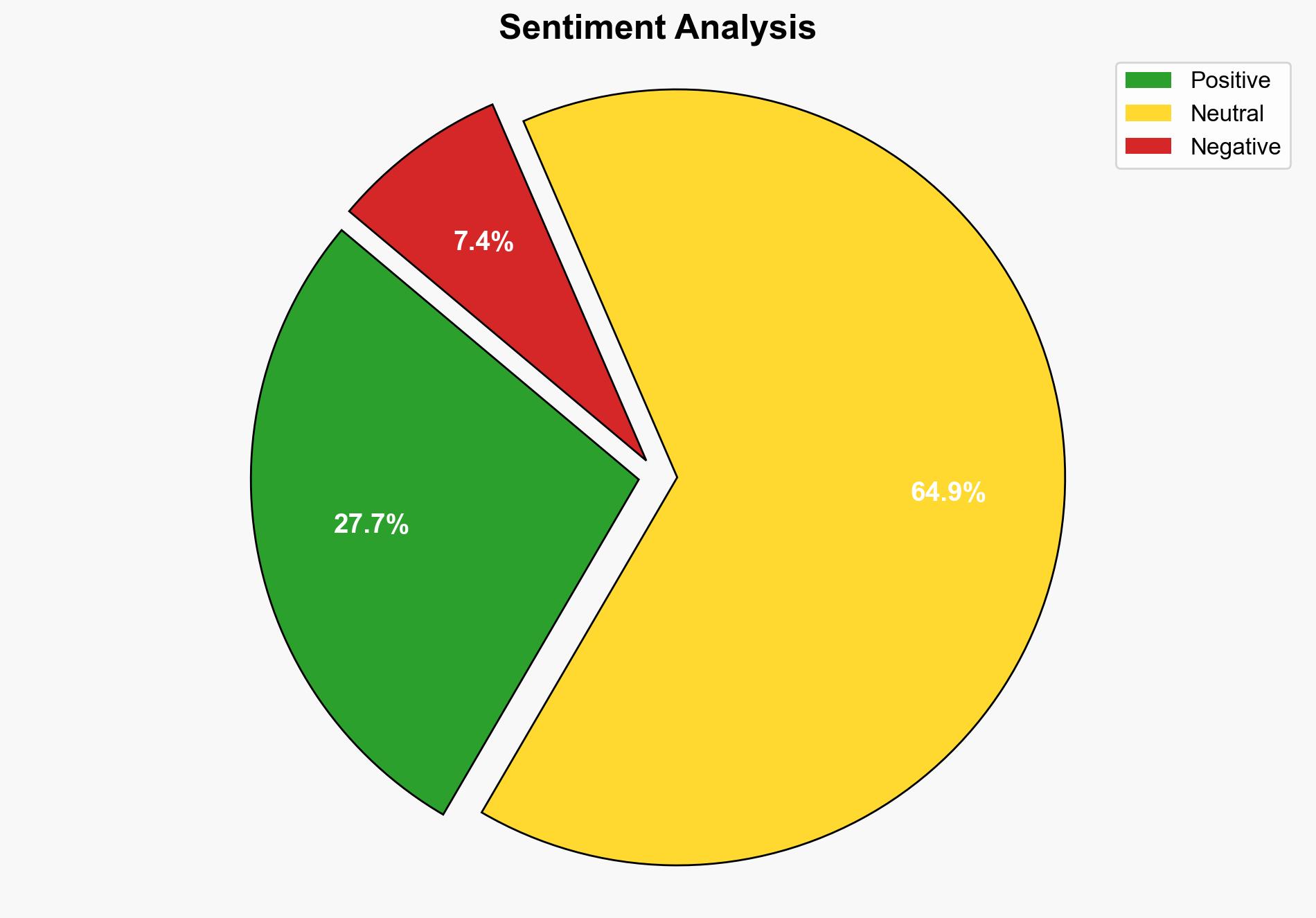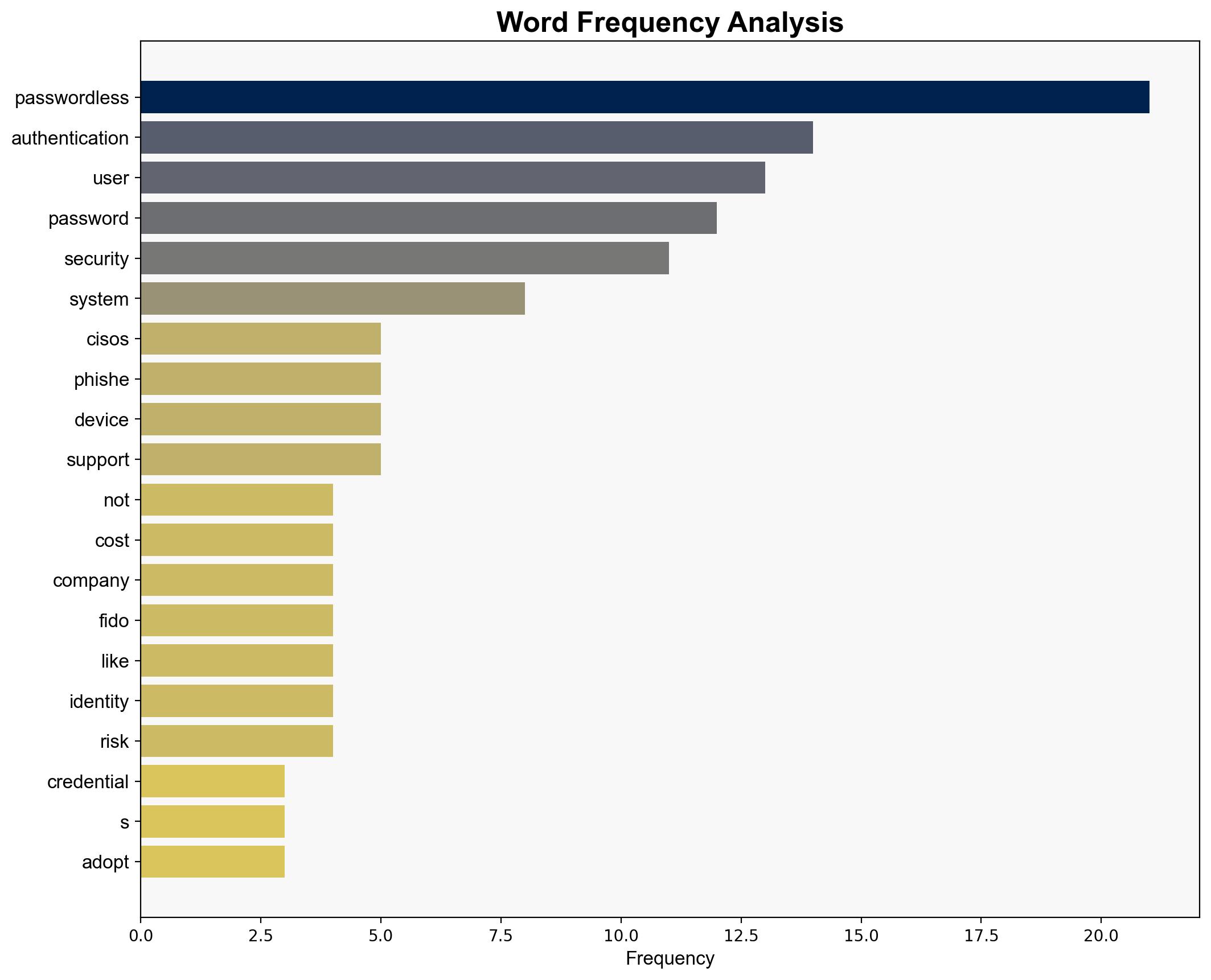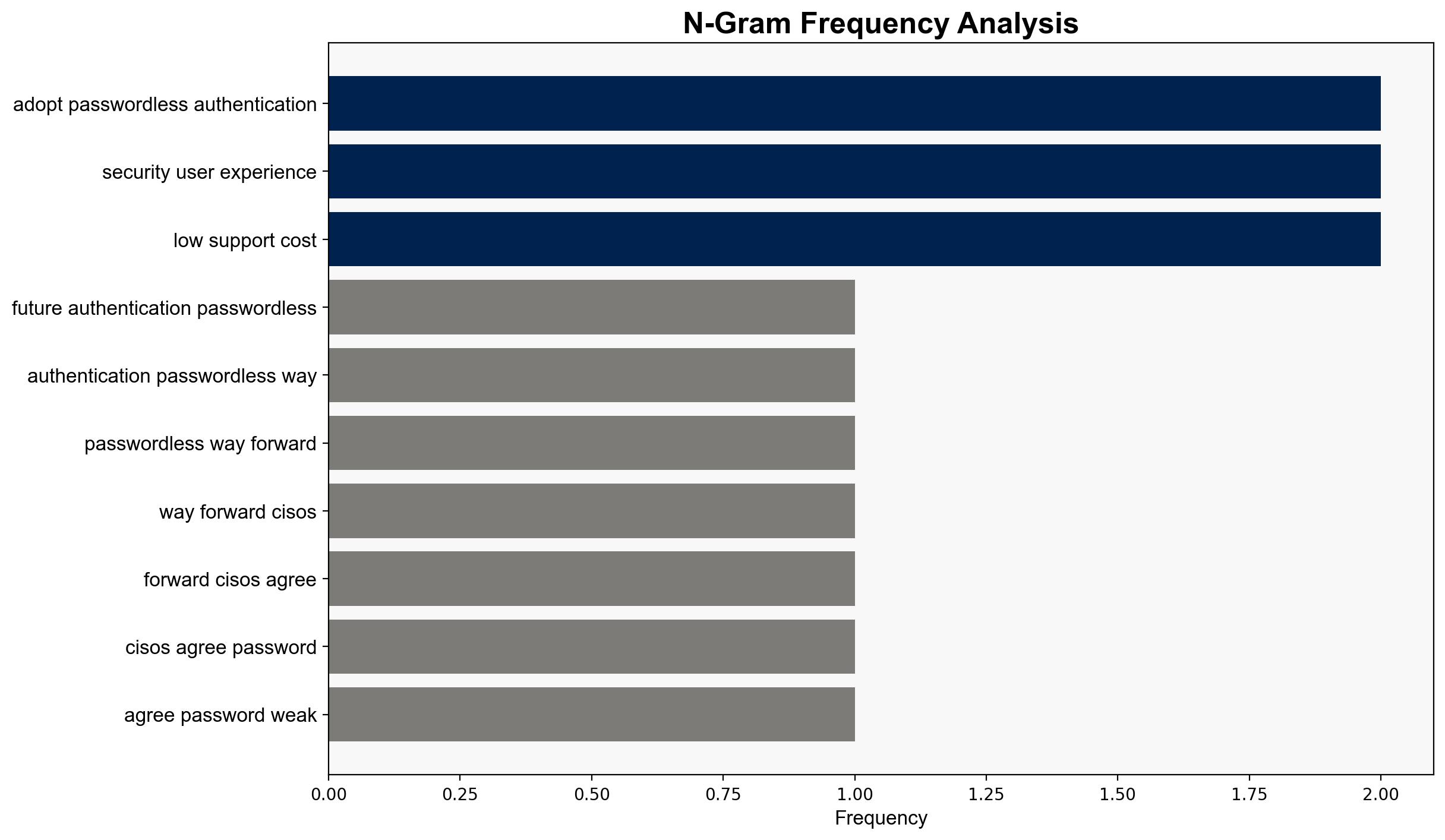The future of authentication Why passwordless is the way forward – Help Net Security
Published on: 2025-04-16
Intelligence Report: The Future of Authentication – Why Passwordless is the Way Forward
1. BLUF (Bottom Line Up Front)
Passwordless authentication is emerging as a critical strategy to enhance cybersecurity by eliminating the vulnerabilities associated with traditional password systems. Despite challenges such as integration with legacy systems and initial costs, the adoption of passwordless methods is gaining momentum. Organizations are advised to invest in education, ensure compliance with industry standards, and offer diverse authentication options to improve security and user experience.
2. Detailed Analysis
The following structured analytic techniques have been applied:
Analysis of Competing Hypotheses (ACH)
The primary motivation behind security breaches is the exploitation of weak authentication methods. Passwords are easily compromised through phishing and credential stuffing, making them a prime target for attackers. The shift towards passwordless systems aims to mitigate these vulnerabilities by using public-key cryptography and device-specific credentials.
SWOT Analysis
Strengths: Enhanced security, improved user experience, reduced password fatigue.
Weaknesses: High initial implementation costs, resistance to change, integration challenges.
Opportunities: Growing industry support, technological advancements, increased user trust.
Threats: Misleading vendor claims, incomplete implementations, evolving phishing tactics.
Indicators Development
Warning signs of emerging cyber threats include increased sophistication in phishing attacks, session hijacking, and exploitation of multi-factor authentication (MFA) weaknesses. Monitoring these indicators can help in preemptively addressing potential security breaches.
3. Implications and Strategic Risks
The transition to passwordless authentication presents both opportunities and risks. While it promises to enhance security and user experience, incomplete or misleading implementations could undermine these benefits. The economic implications include potential cost savings in the long term, but initial investments may be substantial. Politically, the adoption of passwordless systems could influence regulatory standards and compliance requirements.
4. Recommendations and Outlook
- Organizations should prioritize the adoption of FIDO2 standards to ensure robust passwordless authentication.
- Invest in user education and gradual integration to overcome resistance and ensure a smooth transition.
- Develop a comprehensive strategy that includes multiple authentication options to cater to diverse user needs.
- Scenario-based projections suggest a significant reduction in security breaches with widespread adoption of passwordless systems, leading to improved trust and operational efficiency.
5. Key Individuals and Entities
Charlotte Wylie, a notable advocate for passwordless strategies, emphasizes the elimination of password-related challenges. Tech giants like Apple, Google, and Microsoft are pivotal in advancing passwordless technology through their support for passkeys.




